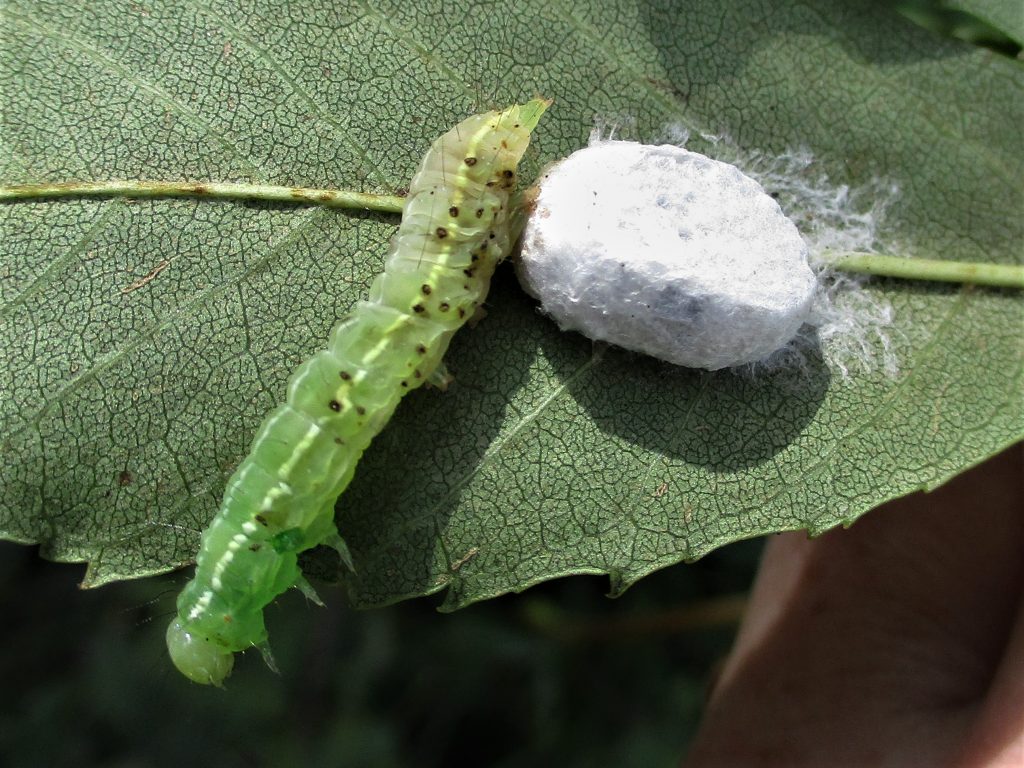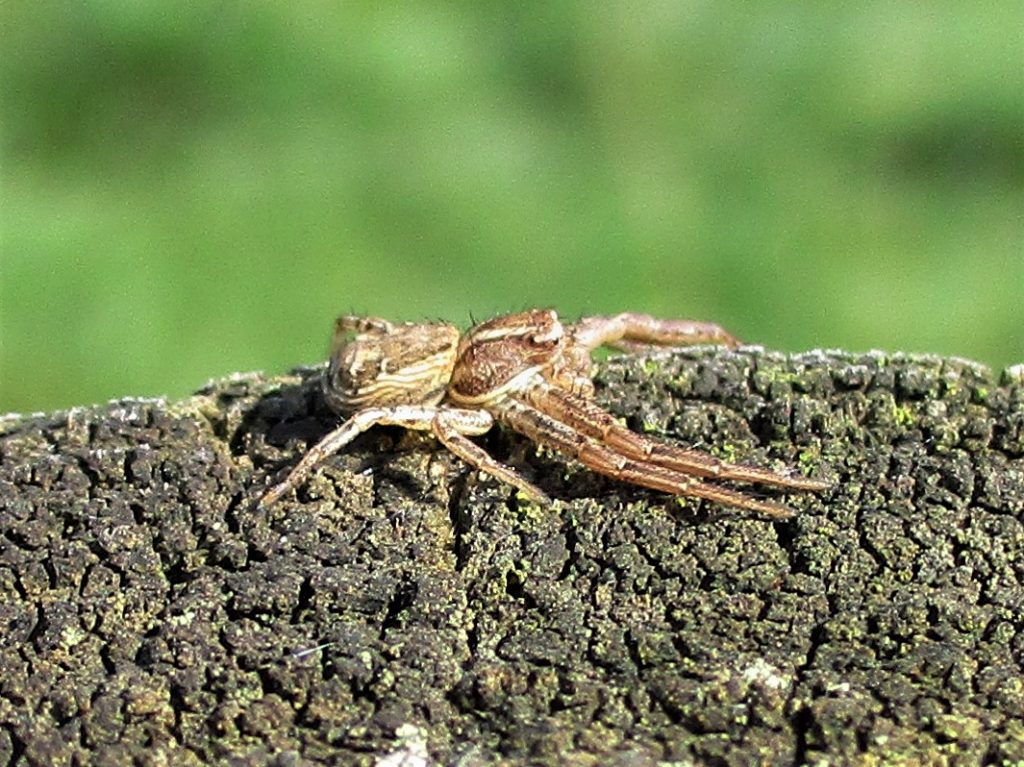Leader: Rob Randall
Three members joined the leader on a blustery day, to look for late season insects and grassland fungi. It was sunny as the party ascended via Charmydown Lane. Ivy Bees, Drone-flies and other insects were feeding on the Ivy flowers and Red Admirals were resting on the seed-heads of Traveller’s Joy, with wings out-stretched. The Old Man’s Beard was popular with bees or flies too but the reason for this was not obvious. A number of species were sunning themselves on fence-posts, including a Harvestman (probably Opilio phalangium), a Crab-spider (Xysticus species) and the Noon Fly (Mesembrina meridiana).
By the time the airfield was reached it had become cloudy and there was little insect activity, apart from numerous Crane-flies and one solitary Small Copper. Despite the recent rain there were few fungi apart from Dung Roundhead (Stropharia semiglobata) and Petticoat Mottlegill (Panaeolus papilionaceus), both associated with old cow-pats. We were not particularly looking for birds but did come across a Wheatear perched on a piece of ironwork.
Just before descending we spotted 22-spot and 7-spot Ladybirds, and a silk cocoon, which turned out to be the most interesting find of the day. It was on a fallen Ash leaf and close examination revealed a dead caterpillar, later identified as that of the Coronet moth (Craniophora ligustri). It had been parasitized by grubs of a Braconid wasp. Small black marks on the sides of the caterpillar marked points at which the grubs had been attached but they had since spun a communal cocoon in which to pupate.
Coming down the lane, a large flock of Pied Wagtail were feeding on an Ash suffering from Ash Die-back and a freshly emerged Comma butterfly was taking in the sun. On a bank by the A46 we were lucky to come across Rufous Grasshopper (Gomphocerripus rufus), a species that the leader expected to find, because its main colonies locally are in Chilcombe Bottom nearby. It can be told from other grasshoppers by its black, white-tipped antennae. Its abdomen is a rusty colour, hence its name, but this is a feature shared with some of the other species.



Recent Comments